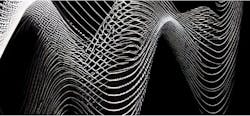Optical polarization is a crucial aspect of modern optical fiber communication systems. In fiber optics, light signals are transmitted through extremely thin strands of glass or plastic fibers. The polarization state of light can impact the signal quality and transmission efficiency. Optical fibers can support different polarization modes, and controlling polarization is essential to ensure that the signal reaches its destination with minimal distortion and interference.
Modern display technologies, such as liquid crystal displays (LCDs) and organic light-emitting diode displays (OLEDs), heavily rely on the control of polarization. Liquid crystals are used to modulate the polarization of light passing through the display, allowing for the precise control of each pixel’s brightness and color. By manipulating the orientation of liquid crystals using electric fields, displays can achieve high-resolution images with vibrant colors. Moreover, 3D displays utilize polarization to create the illusion of depth, as each eye perceives a slightly different image through polarized glasses.








